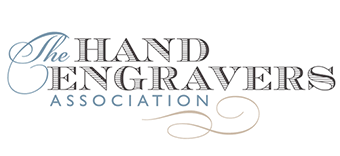A history of hand engraving
As part of The Hand Engravers Association of Great Britain’s Heritage Lottery funded project in 2013, ‘Cut in Clerkenwell’ we enlisted the help of volunteers and trained them to research the history of hand engraving from 1900 to the present day.
The aim of the project was to get a broad picture of hand engraving over the last century. We wanted to identify what had been the most common forms of hand engraving and to see what they are now, and to find out if the uses of hand engraving have changed. We gathered information on individual engravers and collected career details, and many photographic records, of over 350 individuals and businesses.
We found that many hand engravers did not, and still do not, sign or get credit for their work. Much hand engraving is done on objects made by others with the hand engraver adding embellishments. Through this project we hope to begin to give hand engravers the recognition they deserve.
Our documentation of over 350 hand engravers shows chains of learning. These are working links between the engravers in the early part of the century through to now, running from master to apprentice, to apprentice’s trainee and so on. The Archive also includes interviews with individual engravers and those working in firms, as well as an in-depth look at the many different types of hand engraving.
This first Archive of hand engraving in this country is now permanently housed and publicly accessible at the Guildhall Library in the City of London.
Archive of history of hand engraving
As part of The Hand Engravers Association of Great Britain’s Heritage Lottery funded project in 2013, ‘Cut in Clerkenwell’, we enlisted the help of volunteers and trained them to research the history of hand engraving from 1900 to the present day. These interviews represent a selection of the archive, more are being uploaded. We are also adding new archive interviews.

